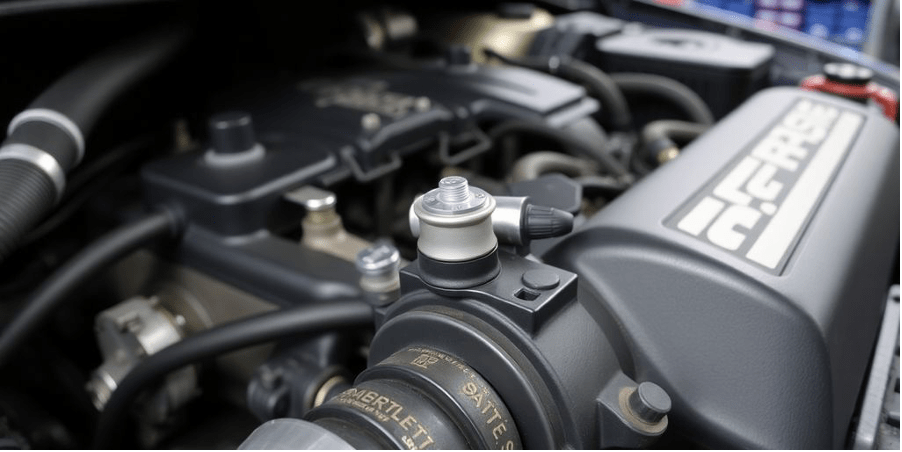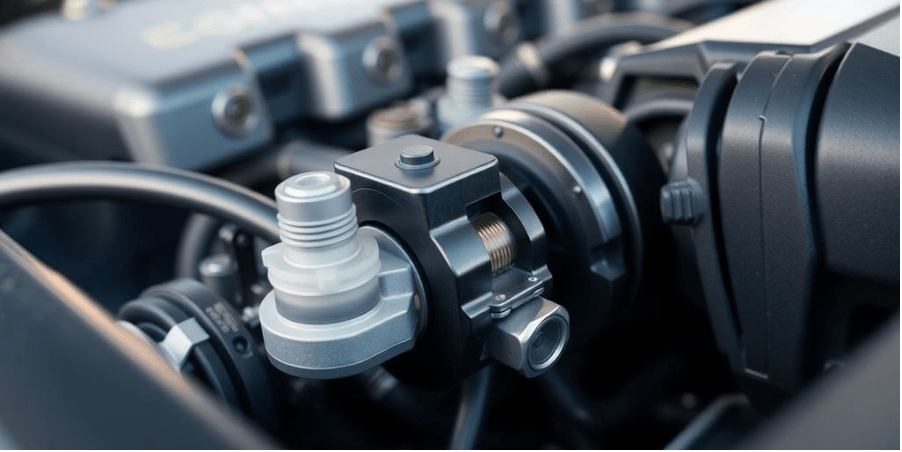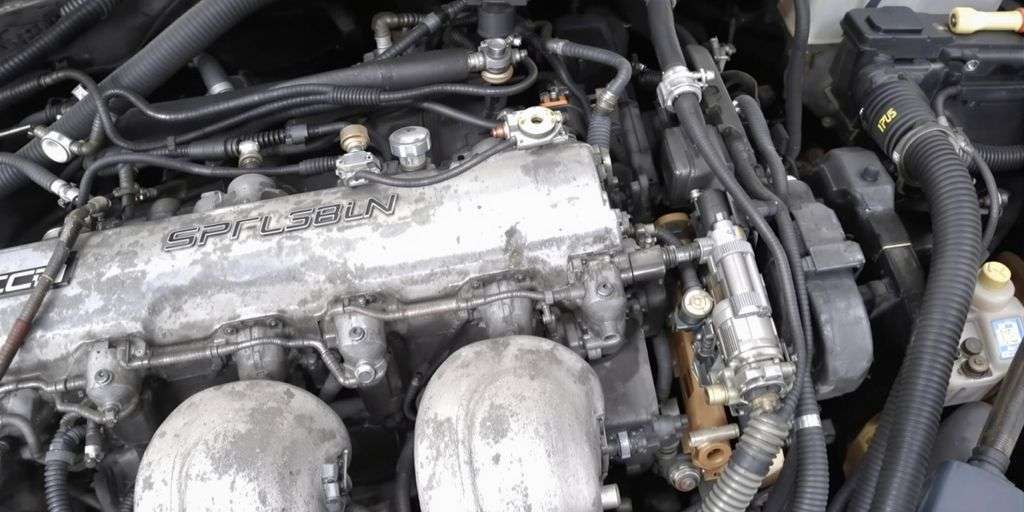Key Takeaways
- Understand the symptoms and effects of a faulty camshaft position sensor before selling.
- Evaluate whether to repair or replace the sensor based on cost and convenience.
- Highlight the car's strengths and be transparent about the sensor issue when marketing.
- Set a realistic price considering the sensor problem to attract potential buyers.
- Familiarize yourself with the legal requirements for disclosing vehicle issues.
Understanding the Camshaft Position Sensor Issue
Signs of a Malfunctioning Sensor
When your car's camshaft position sensor starts acting up, it can be a real headache. One of the first things you'll likely notice is the Check Engine light popping on. This isn't just a pesky light; it’s trying to tell you something important. Other symptoms? You might find your car having trouble starting, or maybe it just doesn't run as smoothly as it used to. Increased fuel consumption is another telltale sign, as the engine struggles to get the timing right without accurate sensor data. And if you’re feeling vibrations or shaking while driving, that’s another clue that something's off with the sensor. A faulty camshaft position sensor can cause such abnormal shaking or trembling, which is a clear indicator of its failure.
Impact on Vehicle Performance
A malfunctioning camshaft position sensor can really mess with your car’s performance. It plays a key role in controlling when the engine fires and how much fuel it uses. Without it working properly, you might notice the engine misfiring or even stalling. This sensor helps the engine's control unit decide the best time for fuel injection and ignition, so when it’s not working right, everything gets out of sync. You could see a drop in power, poor acceleration, and overall sluggishness. Not fun when you’re trying to get somewhere.
Common Causes of Sensor Failure
So, what makes these sensors go bad? A few things, really. Normal wear and tear is a big one—like anything else, these parts don’t last forever. They can also get damaged in an accident or from overheating, especially if your engine oil is running low. Electrical issues, like short circuits, can also mess with the sensor. And sometimes, it’s just a faulty part from the get-go. Whatever the reason, it's important to get it checked out sooner rather than later to avoid bigger problems down the road.
Driving with a faulty camshaft position sensor is not just annoying, it can be risky. Ignoring the warning signs can lead to more serious engine problems, which could leave you stranded when you least expect it.
Preparing Your Car for Sale
Assessing the Vehicle's Condition
Before you even think about selling, get a good look at your car's condition. Check for any obvious issues, like dents or scratches, and don't forget to look under the hood. Inspecting the car thoroughly can give you a clear picture of what you're dealing with. You might want to pay special attention to the camshaft position sensor, especially if you've been having issues with it. It's important to be upfront about these things when you start talking to potential buyers.
Gathering Necessary Documentation
Next up, gather all the paperwork. This includes the title, service records, and any receipts for repairs or parts you've bought. Having these documents ready shows buyers that you're organized and trustworthy. Plus, it makes the whole process smoother when it comes time to close the deal.
Setting a Competitive Price
Pricing your car can be tricky, especially if it has a known issue like a faulty camshaft position sensor. Do some research to see what similar cars are going for in your area. Remember, the P0340 trouble code is a common issue that can affect the price. You might need to adjust your price to account for this. A realistic price can attract more buyers and help you sell your car faster.
Selling a car with a known issue can be a bit of a challenge, but being honest and prepared can make the process much easier.
Repair or Replace: Making the Right Decision
Evaluating Repair Costs
First things first, figure out how much fixing that sensor is gonna set you back. Repair costs can vary a lot, depending on your car's make and model. Generally, you're looking at somewhere between $150 to $300 for a professional job. If you're handy with tools, you might save some cash by doing it yourself, but you'll still need to buy the part, which can cost around $50 to $100.
When to Consider Replacement
Sometimes, fixing the sensor just isn't worth it. If your car is older or has other issues, it might be smarter to replace the sensor altogether. Consider replacing it if:
- The repair costs more than half of the car's value.
- The car has other major problems.
- You're planning to sell the car soon and want to ensure it's in good working condition.
DIY vs Professional Repair
Deciding between DIY and hiring a pro? Well, it depends on your comfort level with car repairs. A DIY approach can be rewarding but risky if you're not experienced. Here's a quick look at the pros and cons:
| Option | Pros | Cons |
| DIY | Cheaper, learn new skills | Risk of mistakes, time-consuming |
| Professional | Quick, reliable results | More expensive, less hands-on |
If you're not sure, it's always safe to consult with a mechanic. They can give you a better idea of what's involved and whether it's worth tackling on your own.
Marketing Your Car Effectively
Highlighting the Car's Strengths
When selling a car with a known issue like a malfunctioning camshaft position sensor, it's important to emphasize the vehicle's positive attributes. Start by listing features that are in good condition, such as a well-maintained interior, recent tire replacements, or a clean accident history. Presenting your car's strengths helps potential buyers see the value beyond the sensor issue.
Disclosing the Sensor Issue
Honesty is the best policy when it comes to selling a car with mechanical problems. Clearly disclose the camshaft sensor issue to potential buyers. Explain how it affects the car's performance, like causing stalling and sluggish acceleration, and what steps have been taken to address it. Transparency builds trust and may even attract buyers who are willing to fix the problem themselves.
Using Online Platforms for Wider Reach
In today's digital age, utilizing online platforms can significantly expand your reach. Websites and apps dedicated to car sales are great places to start. Craft a detailed listing with high-quality photos that showcase the car's best features. Don't forget to mention the sensor issue in the description. Online platforms also allow you to reach car enthusiasts or mechanics who might be specifically looking for a project car.
Negotiating with Potential Buyers

Setting Realistic Expectations
When you're selling a car with a known issue like a malfunctioning camshaft position sensor, it’s key to set the right expectations from the start. Be upfront about the sensor problem and explain how it affects the car. This transparency can build trust with potential buyers.
Handling Objections About the Sensor
Expect questions and concerns about the sensor. Buyers might worry about the cost of repairs or the car’s reliability. Prepare to address these by having repair estimates handy or discussing potential fixes. Sometimes, offering a small discount can help ease these concerns.
Closing the Deal Successfully
Once you’ve addressed the buyer’s concerns, it’s time to close the deal. Highlight the car’s strengths to remind them why it’s a good purchase despite the sensor issue. Ensure all paperwork is ready to avoid delays, and consider using a secure payment method to finalize the sale.
Selling a car with a known issue requires patience and honesty. By being open about the car's condition and addressing concerns head-on, you can still find a buyer who sees the value in your vehicle.
Legal and Ethical Considerations
Understanding Disclosure Laws
When selling a car with a known issue, like a malfunctioning camshaft position sensor, it's super important to know what the law says about disclosure. Many places have rules that say you gotta tell buyers about major problems. Failing to disclose such issues can lead to legal trouble down the line, so it's best to be upfront. Check local laws to know exactly what you need to share.
Ensuring a Fair Transaction
To keep the sale fair, consider these steps:
- Full Transparency: Always be honest about the car's condition.
- Documentation: Keep records of any repairs or inspections.
- Price Adjustment: Reflect the car's issues in the asking price.
Being fair not only protects you legally but also builds trust with potential buyers.
Protecting Yourself Legally
Selling a car isn't just about handing over the keys. You must protect yourself legally too. Draft a bill of sale that outlines the car's condition and any known issues. This document can be a lifesaver if disputes arise later. Also, make sure to transfer the title properly to avoid future liabilities.
Selling a car with issues doesn't have to be a headache. By being honest and following the right steps, you can ensure a smooth transaction.
By keeping these legal and ethical points in mind, you'll not only sell your car more smoothly but also sleep better knowing you've done everything by the book.
Finalizing the Sale

Completing the Paperwork
Alright, let's talk paperwork. When you're selling a car, especially one with a known issue like a malfunctioning camshaft position sensor, getting your documents in order is key. You're gonna need the car's title, a bill of sale, and possibly a release of liability form. These documents ensure that the car is legally transferred to the new owner and that you're no longer responsible for it. Double-check everything. It's easy to miss a signature or a date, and that can cause headaches later.
Transferring Ownership
Once the paperwork is sorted, it's time to transfer ownership. This usually involves a visit to your local DMV or equivalent, where you'll hand over the necessary forms and pay any required fees. Make sure the new owner knows their responsibilities too, like registering the car in their name and getting insurance. It's also a good idea to notify your insurance company about the sale to avoid any mix-ups.
Receiving Payment Securely
When it comes to getting paid, you want to be cautious. Cash is king, but if that's not possible, consider a cashier's check or a bank transfer. These methods are more secure than personal checks, which can bounce. If you're meeting the buyer in person to exchange money, choose a safe, public location. Some people even meet at their bank to complete the transaction, which can add an extra layer of security.
Selling a car with issues like a P0340 trouble code can be tricky, but by staying organized and transparent, you can ensure a smooth and fair transaction for both parties.
Conclusion
Selling a car with a faulty camshaft position sensor might seem like a hassle, but with the right approach, it doesn't have to be. First, be upfront about the issue with potential buyers. Honesty goes a long way and can help build trust. Consider getting a professional diagnosis to provide buyers with a clear understanding of the problem. If you're handy with tools, replacing the sensor yourself could be a cost-effective solution. Otherwise, factor the repair cost into your asking price. Remember, a well-maintained car, even with a few hiccups, can still find a happy new owner. So, take a deep breath, follow these tips, and you'll be on your way to sealing the deal.
Frequently Asked Questions
What does a camshaft position sensor do?
A camshaft position sensor helps your car's computer figure out the exact position of the camshaft. This information is used to control the timing of the engine's fuel injection and ignition.
What happens if the camshaft position sensor fails?
If the camshaft position sensor fails, your car might have trouble starting, run poorly, or even stall. You might also see the “check engine” light on your dashboard.
Can I drive with a bad camshaft position sensor?
It's not a good idea to drive with a bad camshaft position sensor. It can cause your car to run rough and might lead to more serious engine problems if not fixed.
How much does it cost to replace a camshaft position sensor?
Replacing a camshaft position sensor usually costs between $100 and $300, depending on your car's make and model and the labor costs in your area.
Can I replace the camshaft position sensor myself?
If you have some experience working on cars, you might be able to replace the camshaft position sensor yourself. However, if you're not confident, it's best to have a mechanic do it.
Why is my check engine light on after replacing the sensor?
After replacing the sensor, the check engine light might still be on because the car's computer needs to be reset. You can do this with an OBD-II scanner or by driving the car for a while.



